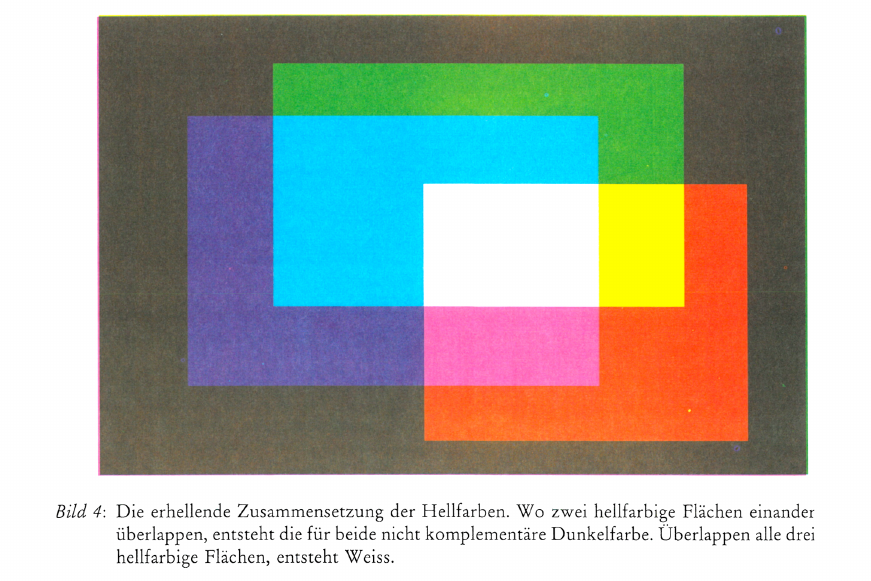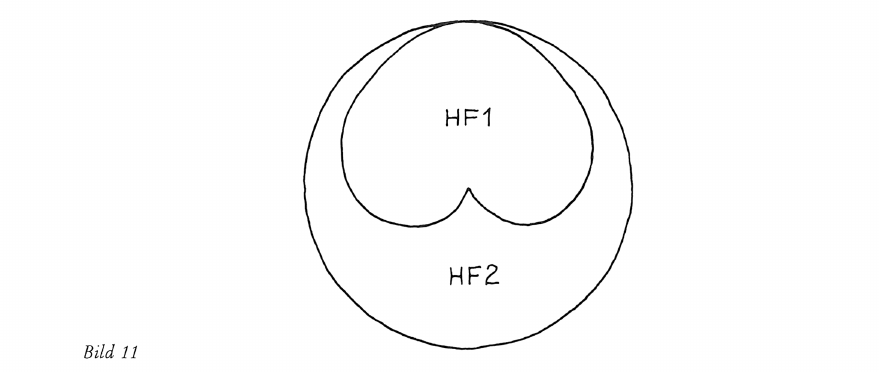Zusammensetzen der Farben
Export Article Citation as
- Plain text
- BibTeX
- RIS format
- Download price : € 6.00
Abstract:
Printers need a minimum of three unique primary colours to print patterns in colour: magenta, yellow and cyan blue. By superimposing pairs of these the darker hues: red, green and violet can be produced. An even darker effect near black results if all three of them are made to cover the same area. The complenmentary processes can be realized by superimposing coloured illuminations. Again three unique primary colours are necessary: red, green and violet. And pairs of these produce the brighter hues yellow, cyan blue and magenta. All three result in a net illumination in which the colours of a set of objects can be distinguished, (what can be said to be white). The apropriate physical arrangements for these two complementary processes can be understood to be polar in the sense of projective geometry. Furthermore an algebraic formalism is introduced, in which the two sets of primary colours react with each other via operators for brightening and darkening processes. If the principle of complementarity is to be upheld even in complicated situations, the formalism turns out to be appropriate to vision rather than to abstract quantitative criteria, for the complementary to a black surface would be any such illumination that allows colours to be discerned (vis. the effect of colour contrast).











